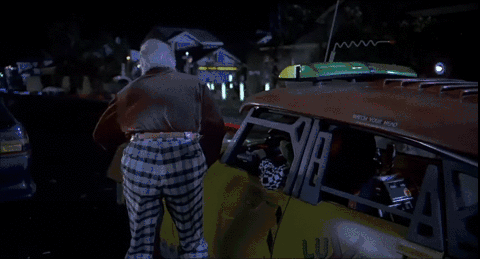When Marty McFly was asked to donate $100 to save the Clock Tower by scanning his thumb on the Portable Thumb Unit, I was bowled over by the thought that such ludicrous technology may one day exist.
That technology was biometric technology and it’s no longer just a Back to the Future II prophecy. When it comes to verifying and authenticating your identity, biometric tech is becoming the go to approach for digital service providers – and banks and financial services providers are ramping up the pace of adoption, as they strive to keep up with the latest in innovation.
In 2020, when we all have 200 accounts (beyond banking and payments) that need usernames and passwords, you’ll be glad biometric authentication was introduced to verify your identity.
With the sheer number of digital services now requiring security details to gain access, biometric authentication is being welcomed by users frustrated with the arduous task of remembering countless logins and passwords.
Difficult to mimic and easy to use
“You can share a password. You can share a PIN, but you sure as hell won’t be sharing a fingerprint, iris, voice or any other unique biometric imprint”. – Nizam Yusuf, 80s child and millennial (just about).
With every human unique in their own individual way, we can easily be identified by our distinct biometric features. Biometric tech recognises these intrinsic human characteristics to enable a secure and convenient method for authentication.
So, the obvious security advantage, in addition to conventional authentication methods such as smartcards, keys, passwords and PINs, is that they are linked to one person. Therefore, it’s difficult to compromise through theft, collusion or loss.
Paying without passwords and PINs
By far one of the most sophisticated and secure forms of access controls available today, biometric authentication is taking an increasingly important role in consumer lives.
From payments made by fingerprint sensors and iris scanners on Apple and Android smartphones, to bank transactions authorised by selfies and voice recognition, biometrics are all the rage in consumer banking.
With new deployments and capabilities being introduced as we ride into the digital future, it’s not surprising biometrics is crossing over into the business world. Biometric authentication tools could very well form a key part of every corporate’s security and fraud prevention apparatus one day.
What can we expect in 2017, 2018, 2019…?
The B2B banking and payments industry is at a crossroads. The biometric tech required to authenticate user details is cost effective and ready to be deployed and users (remember Finance Directors are human too) are ready to adopt the technology. So, what can we expect to see:
FIVE Biometric Technologies Coming Your Way
Fingerprint identification
Fingerprint scanners can identify the unique patterns of ridges and furrows on the tips of your fingers, and store these details to allow you to gain access to digital banking and payment services.
With most people familiar with the use of fingerprints for identification, it is the most widely accepted form of biometric technology and the most commonly deployed for verification purposes.

One of many references to finger print identification in Back to the Future II
Iris / retina Scan
The pattern of the retina blood vessels at the back of the eye and the unique patterns in the coloured circle of the eye can be used to verify and authenticate an individual’s identity.
It is not the most popular biometric authentication method, due to the complex requirement of initial enrolment and ongoing scanning. But technological development over the next few years will surely make this a viable option.

Eye Scan depicted in the 2002 film Minority Report
Vein matching
Using images of vascular patterns beneath the skin surface of an individual’s finger, a finger vein scanner draw on near-infrared light to match and authenticate a user.
Already in existence and currently being trialled by Barclays business customers, this method of biometric authentication is expected to be rolled-out to more banking customers soon.
Find out more about the Barclays Biometric Reader
Voice analysis
Operating on the receiving end of a telephone or microphone, a voice or speech analysis system can identify – and thus authenticate – an individual by receiving and interpreting speech.
There’s no special hardware required and this biometric authentication software is based on the service providers side here. So, this is cheaper to implement than other methods of biometric authentication.
Probably won’t require Richie Rich-style singing for voice analysis
Face recognition
Think of the distance between someone’s eyes, the width of their nose, the position of their cheekbone, the shape of their jaw line and/or the pigmentation of their skin. These are all features that are common to every face but unique to each individual – even twins.
Face recognition systems use these incomparable features to analyse the face of users, in order to verify and authenticate them based on these specific characteristics.
With selfies all the rage, and consumers already in possession of mobile devices with front facing cameras, this is another method of biometric authentication which can be rolled out without too much training required.

Face recognition, another form of biometric authentication
Are you ready to give it a try?
Can you see yourself processing business payments using any of the above methods of biometric authentication?
While as consumers we’re prepared to accept the reality that biometric authentication will become the norm in our life time, what do businesses make of biometric authentication for verifying business payments and bank transactions?
We’d love to hear your comments on this blog post